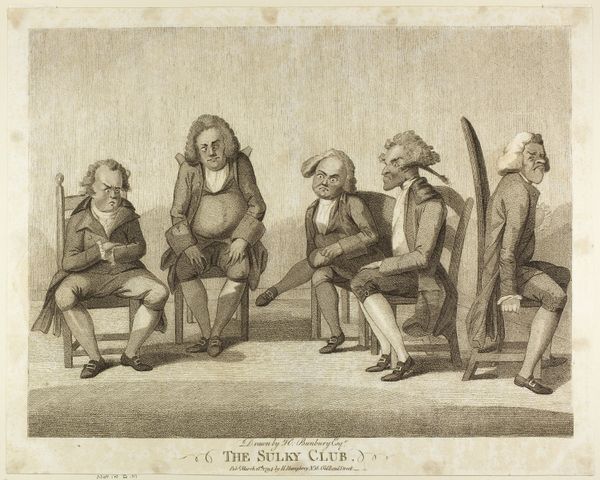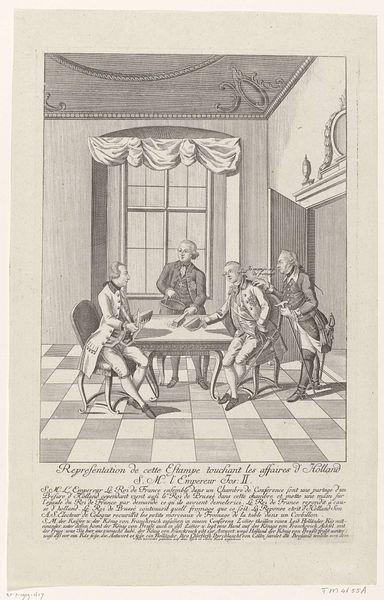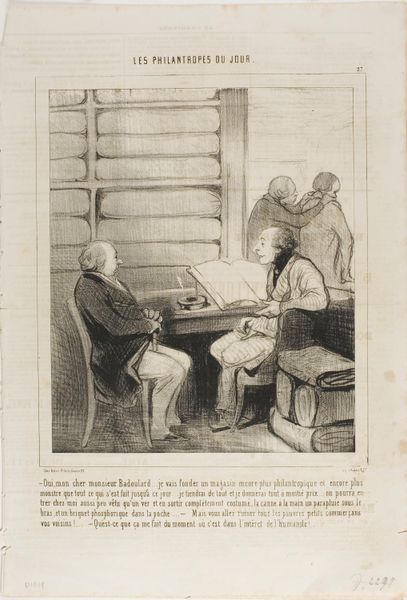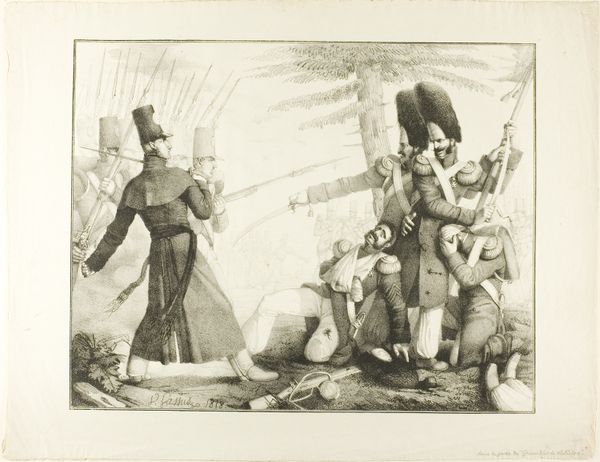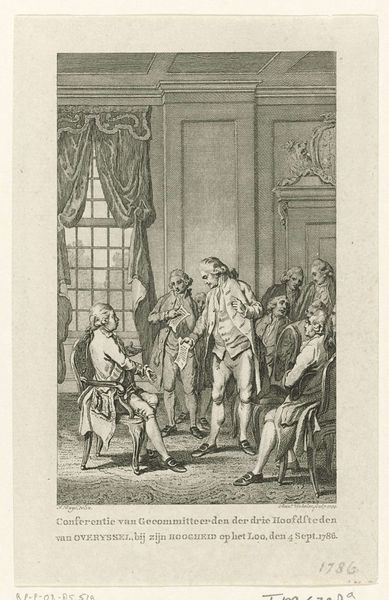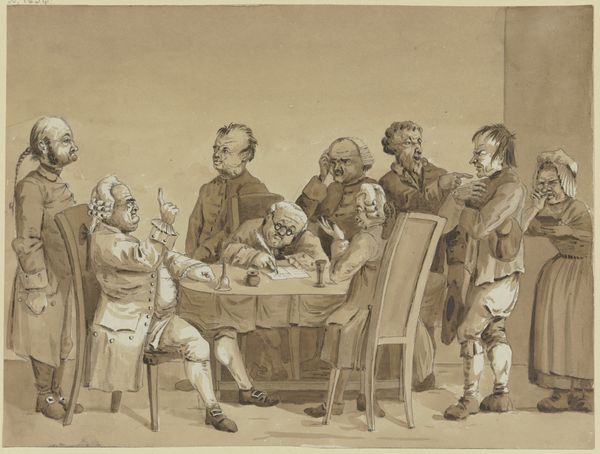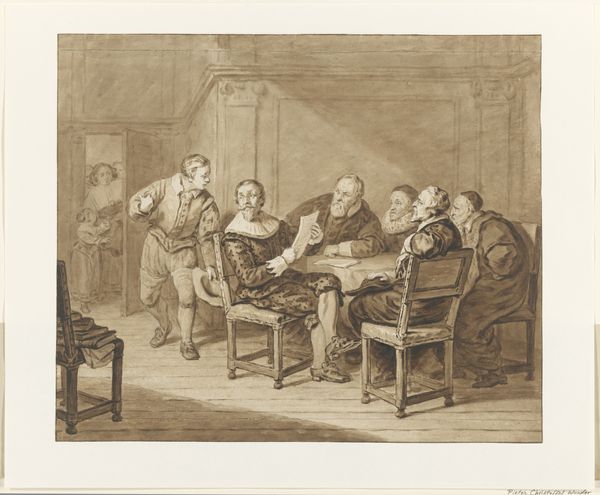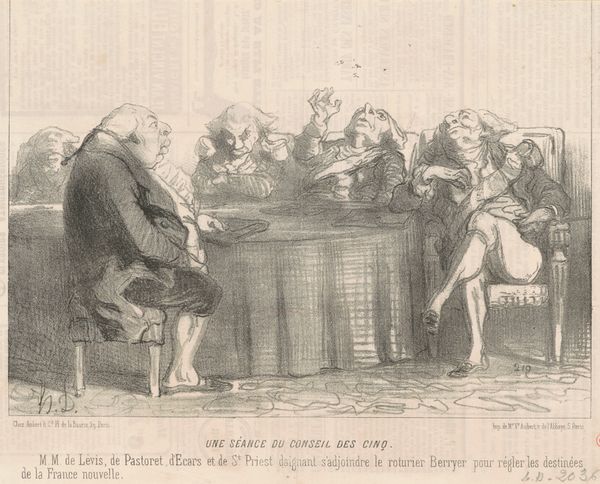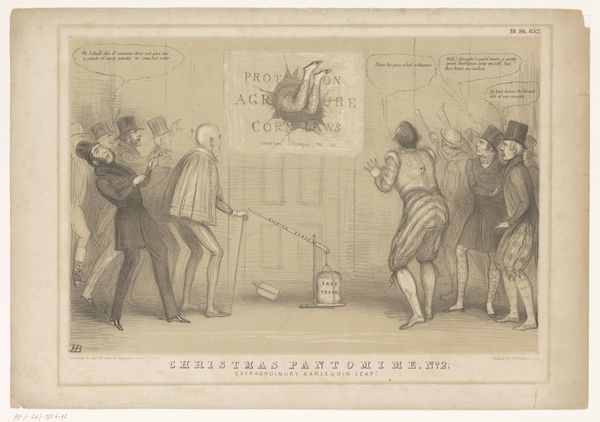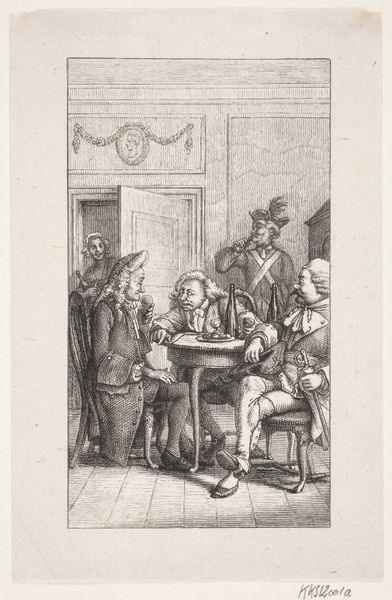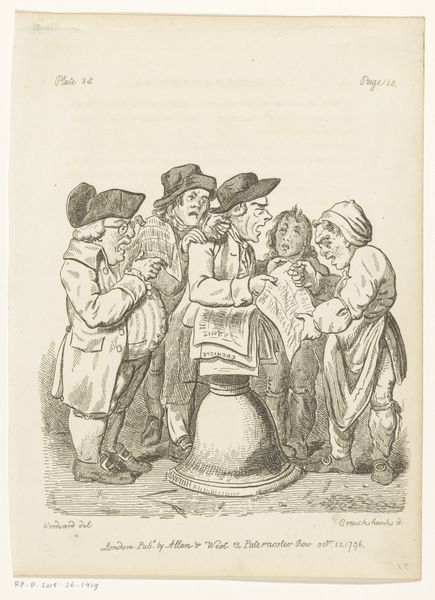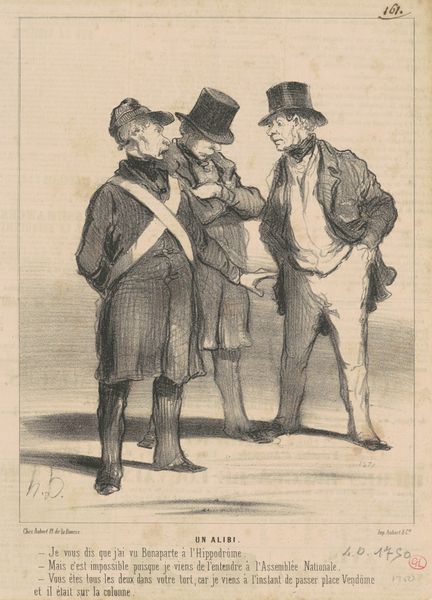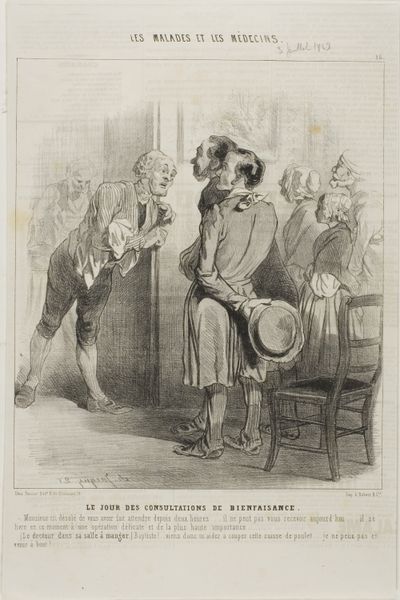
drawing, print, etching, paper
#
portrait
#
drawing
# print
#
etching
#
caricature
#
paper
#
pencil drawing
#
romanticism
#
genre-painting
Dimensions: 343 × 454 mm (image); 383 × 498 mm (plate/sheet)
Copyright: Public Domain
Editor: Here we have "A Smoking Club," an etching and print by Henry William Bunbury. I find it quite comical – all this smoke and these rather stout figures. What jumps out at you when you look at it? Curator: What strikes me is how this etching, and printmaking more broadly, democratized images. Bunbury, in creating this scene of leisure, is engaging with a rapidly changing system of artistic production. Before this, such a scene might only exist as a painting for a wealthy patron. Here, it’s reproduced, consumed, and potentially, critiqued by a much broader audience. Think about the labor involved in creating and distributing these prints. How does that shift the value of the image itself? Editor: So, it's less about the artistry and more about… the accessibility of the image? Curator: Not less about artistry, but more about considering *how* artistry is disseminated and received. The means of production are inextricably linked to its meaning. These weren’t handcrafted in the traditional sense; they're part of a larger industry of image-making. These men indulging in smoking—tobacco’s production and distribution, a major industry involving labor and the exploitation of resources and people from abroad—was also consumed. Where do we see labor within this piece? Editor: I suppose in the creation and the distribution of the print itself, reaching an audience. Before it could only be for elite consumers of art? Curator: Precisely. Consider where this etching would have been displayed and by whom. This isn't high art intended for the walls of an aristocrat; it's circulating amongst a different social sphere, reflecting and potentially shaping their values and behaviors around things like smoking and class. The print is accessible for an expanding group to take ownership over—making it far different in materiality than a privately commissioned piece. Editor: That gives me a completely different way to consider prints. I was focused on the humor of it, but you are saying the *making* of the print is just as important as the content? Curator: Exactly! And think about how those two are connected! We see now that image production and our consumption are inherently political and social acts.
Comments
No comments
Be the first to comment and join the conversation on the ultimate creative platform.
